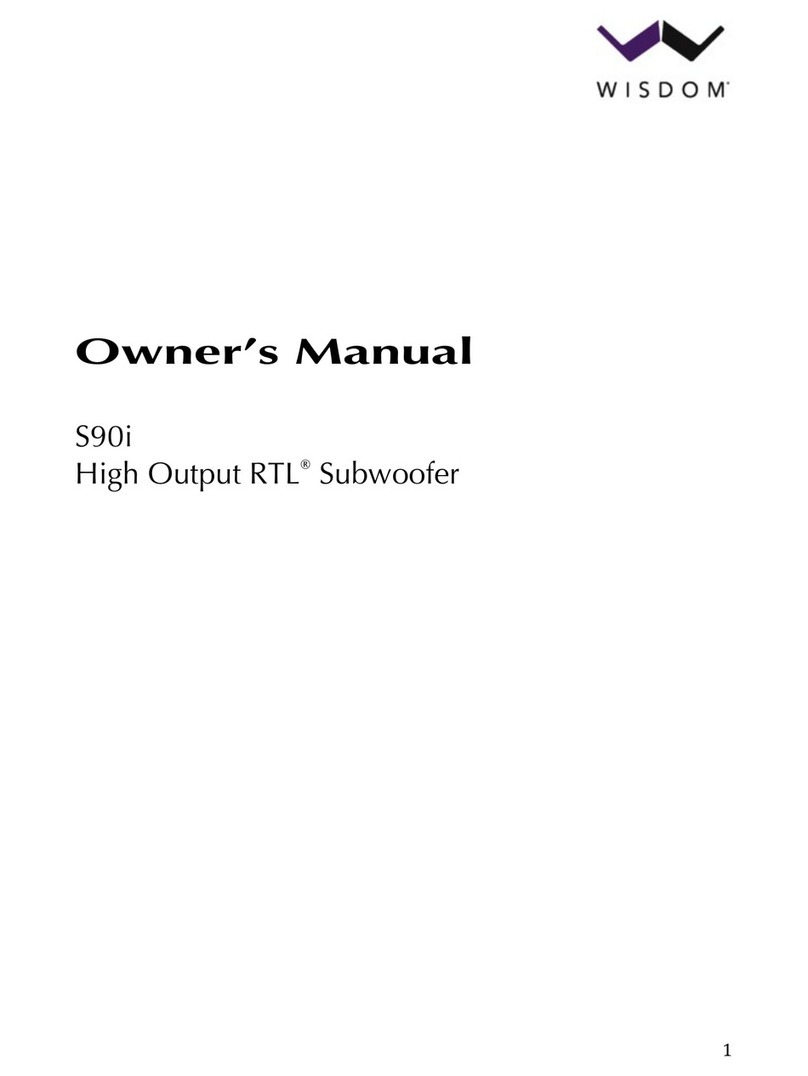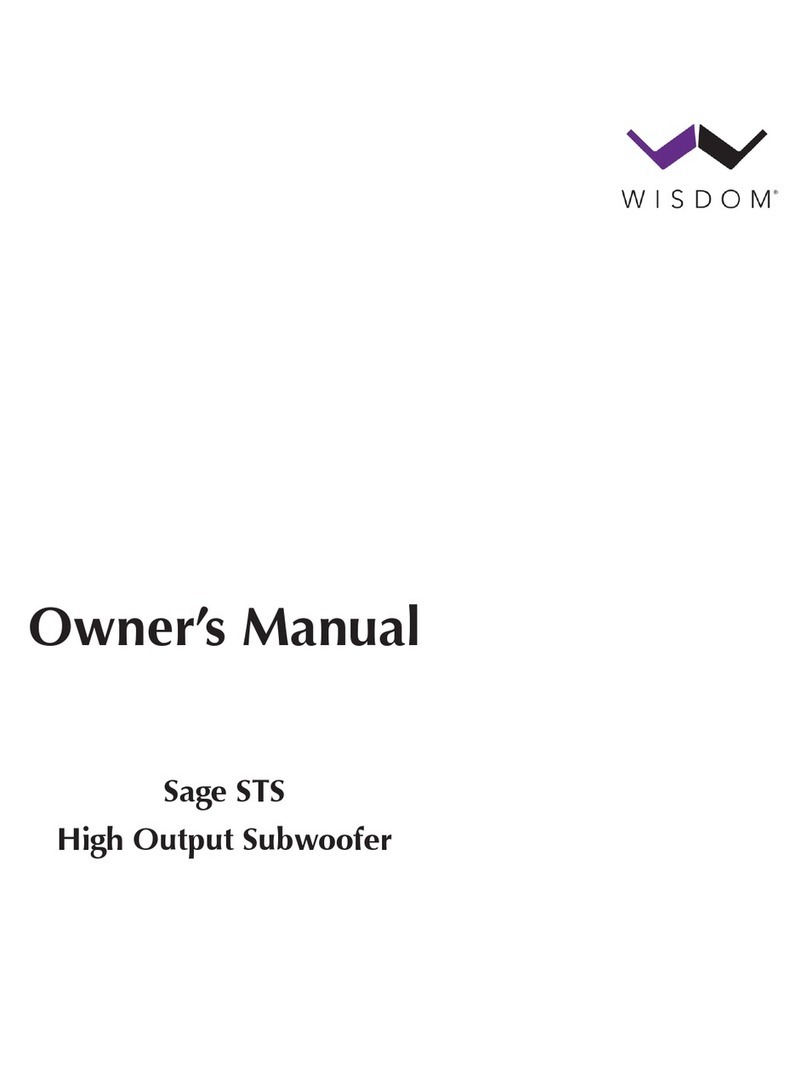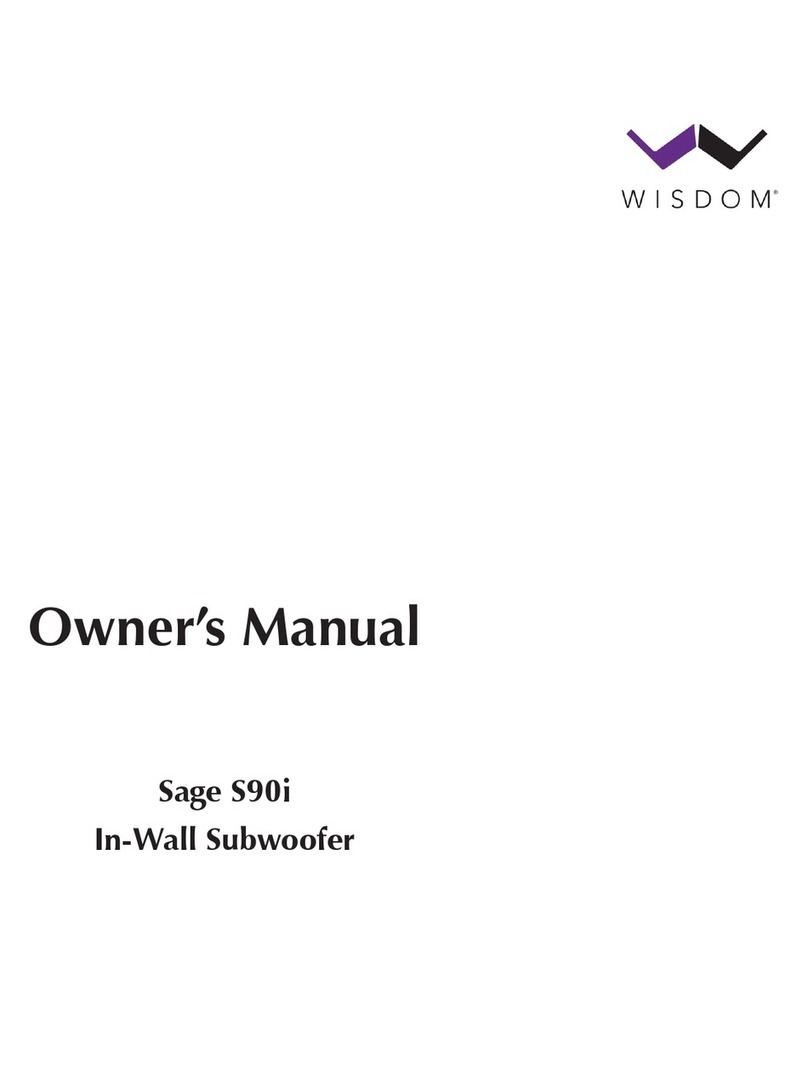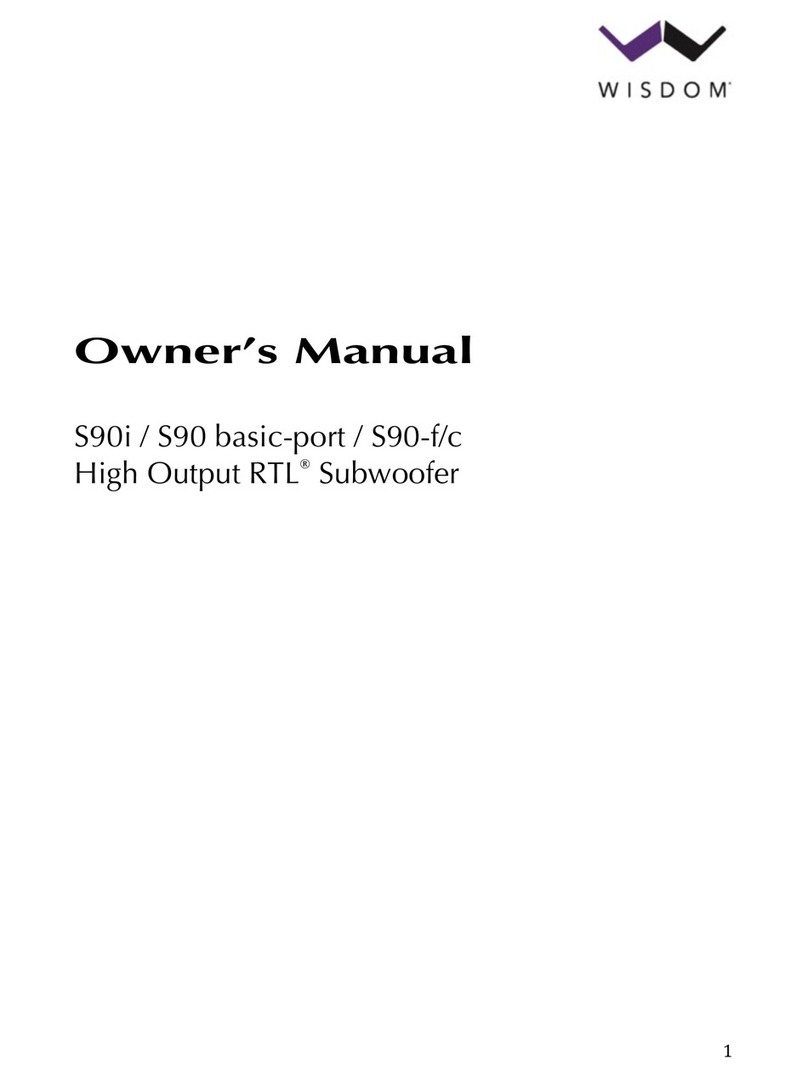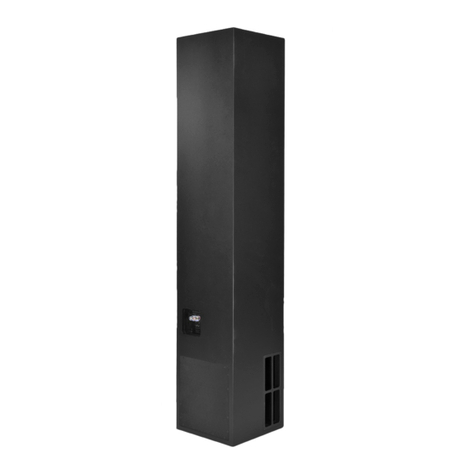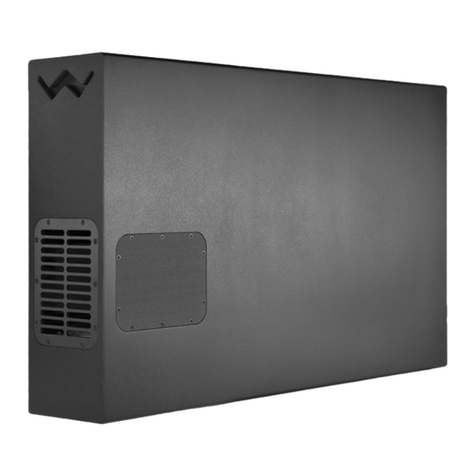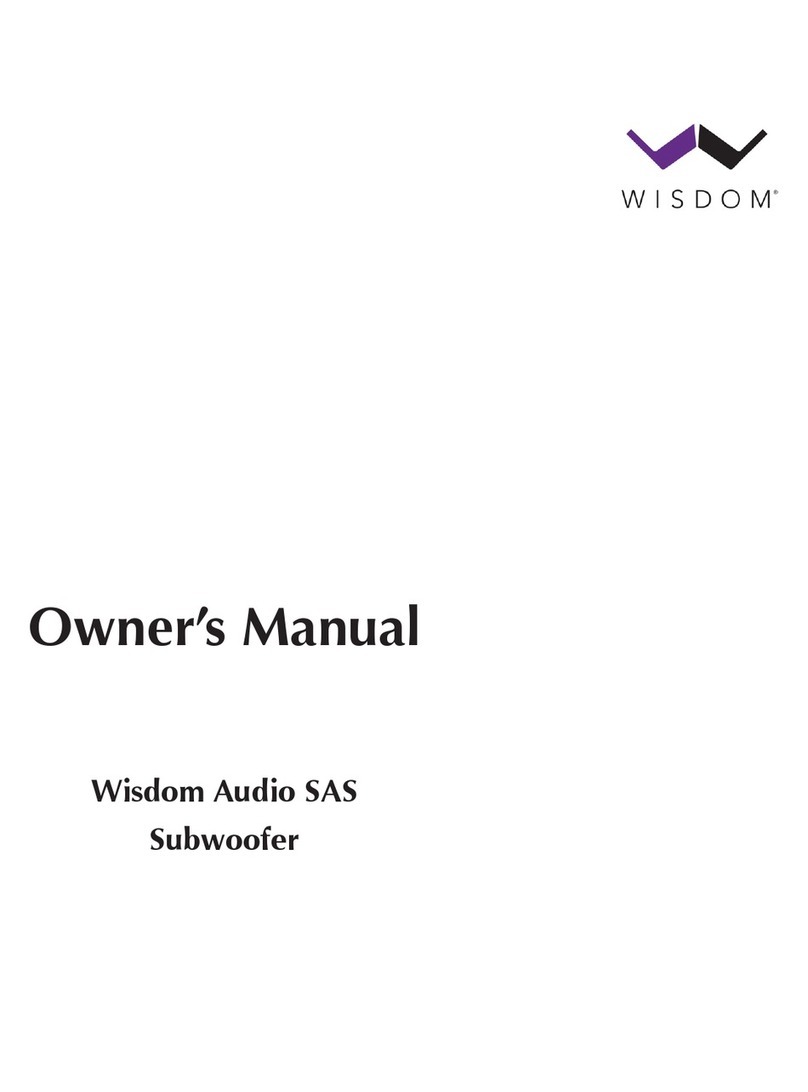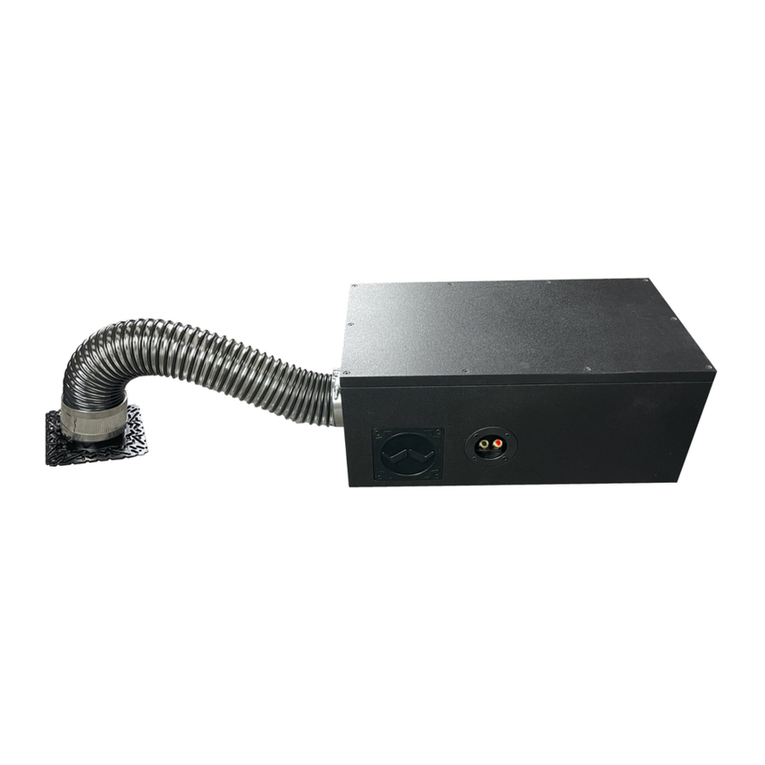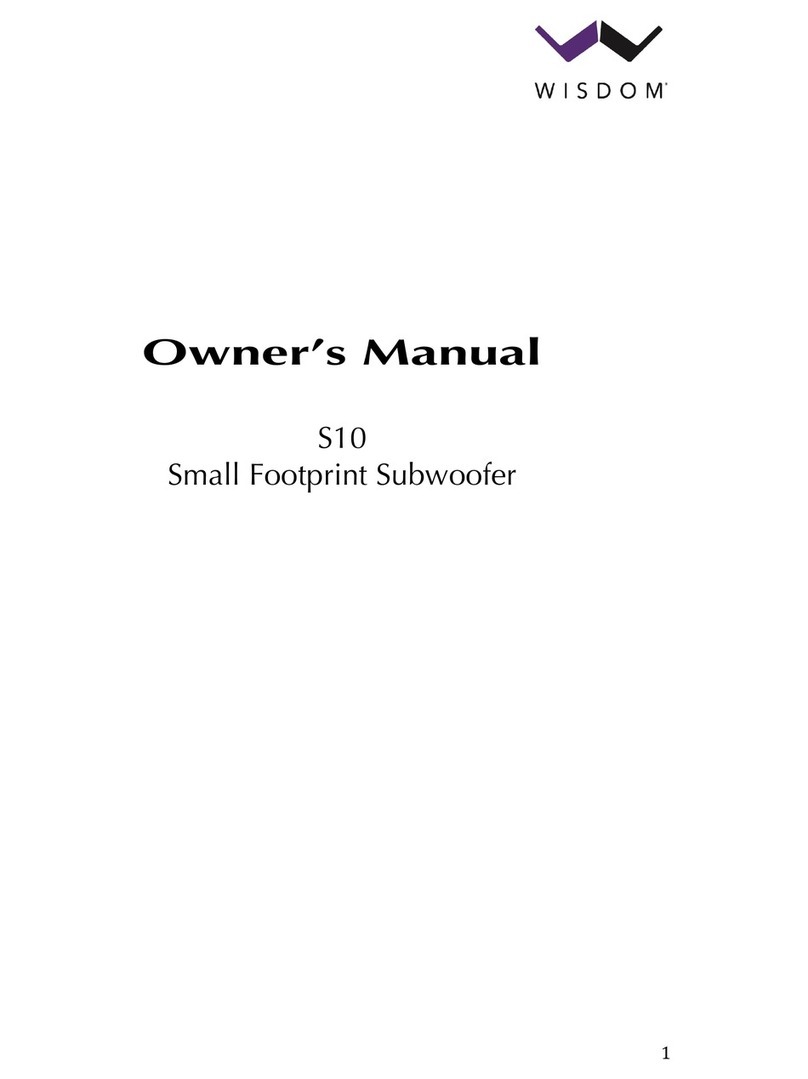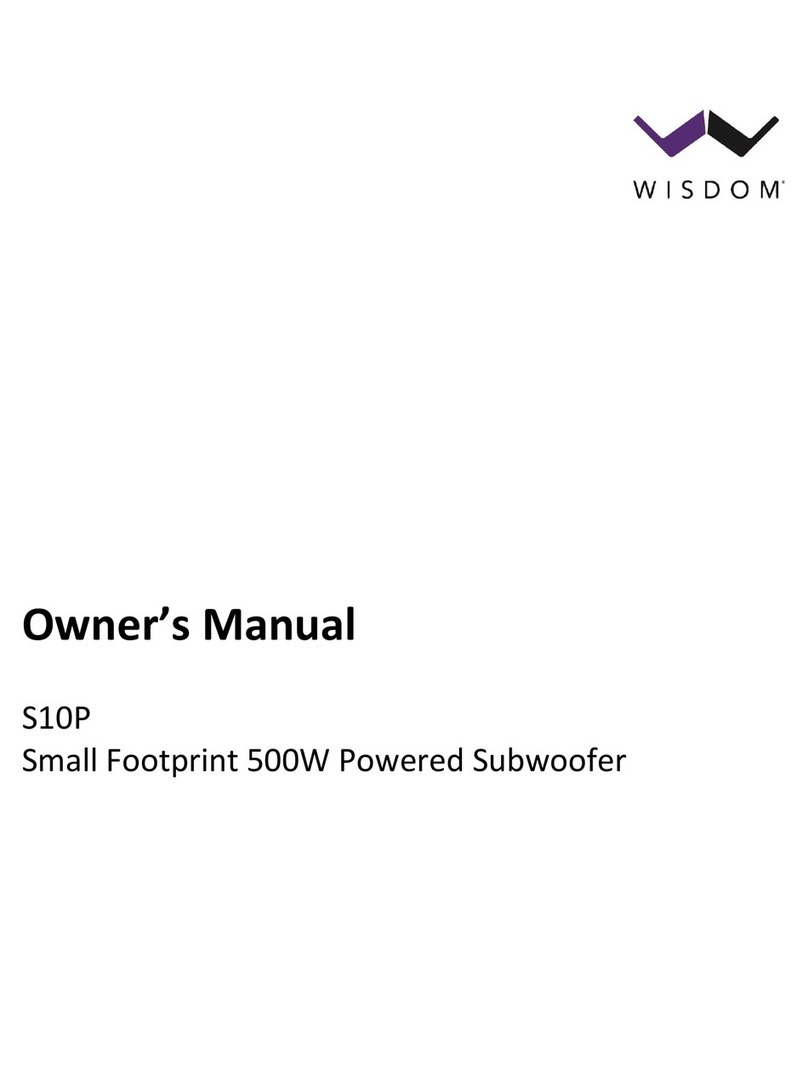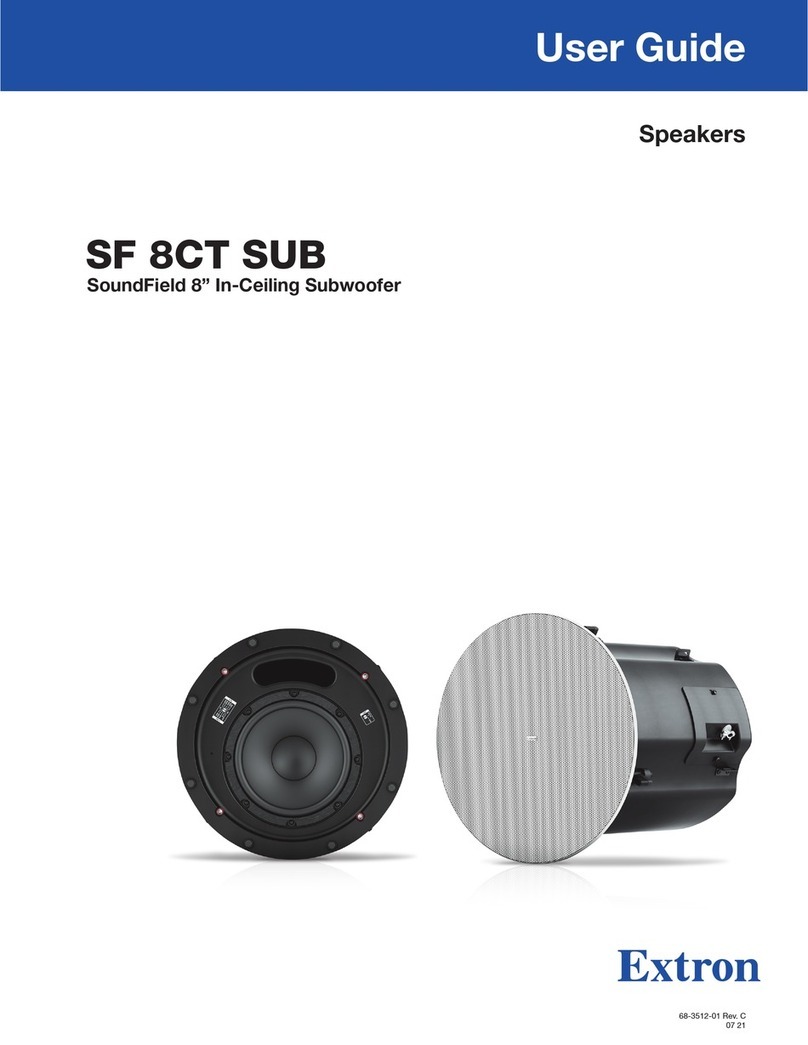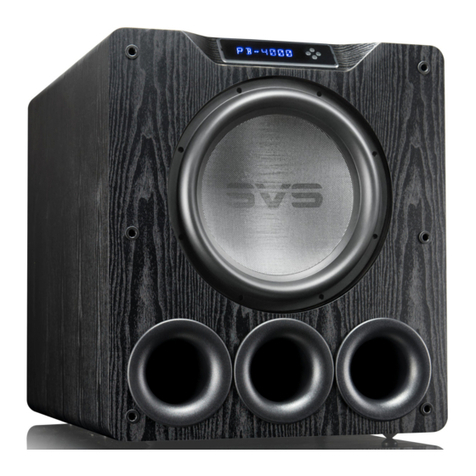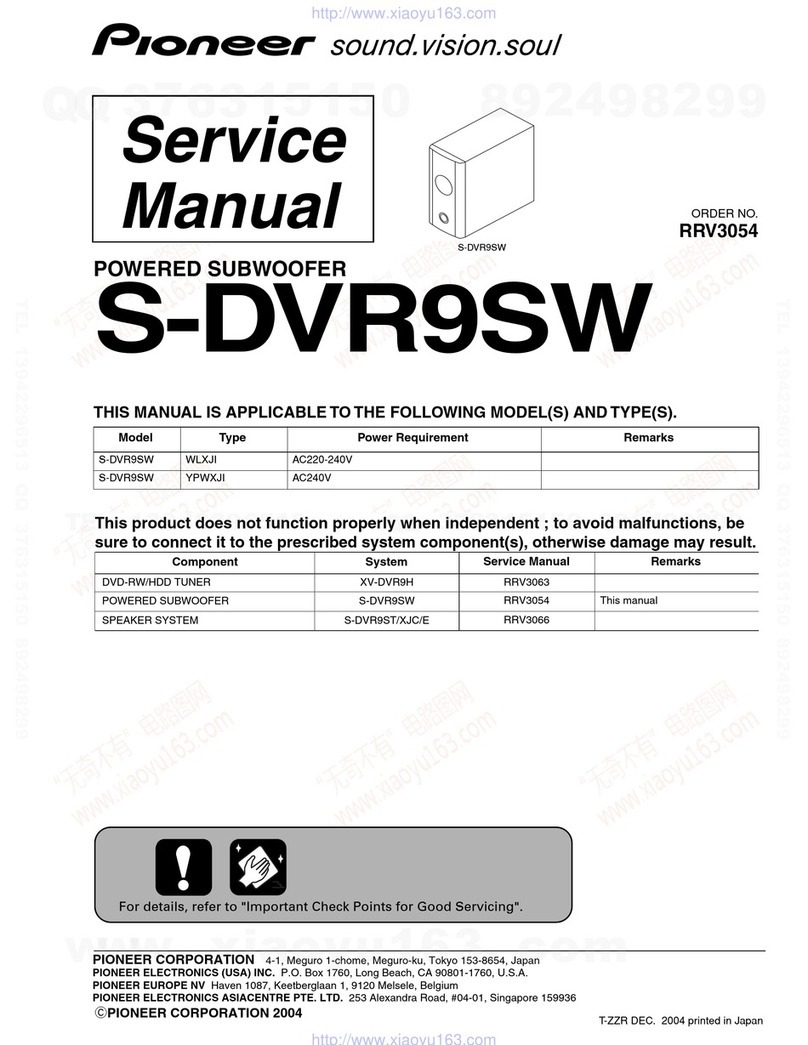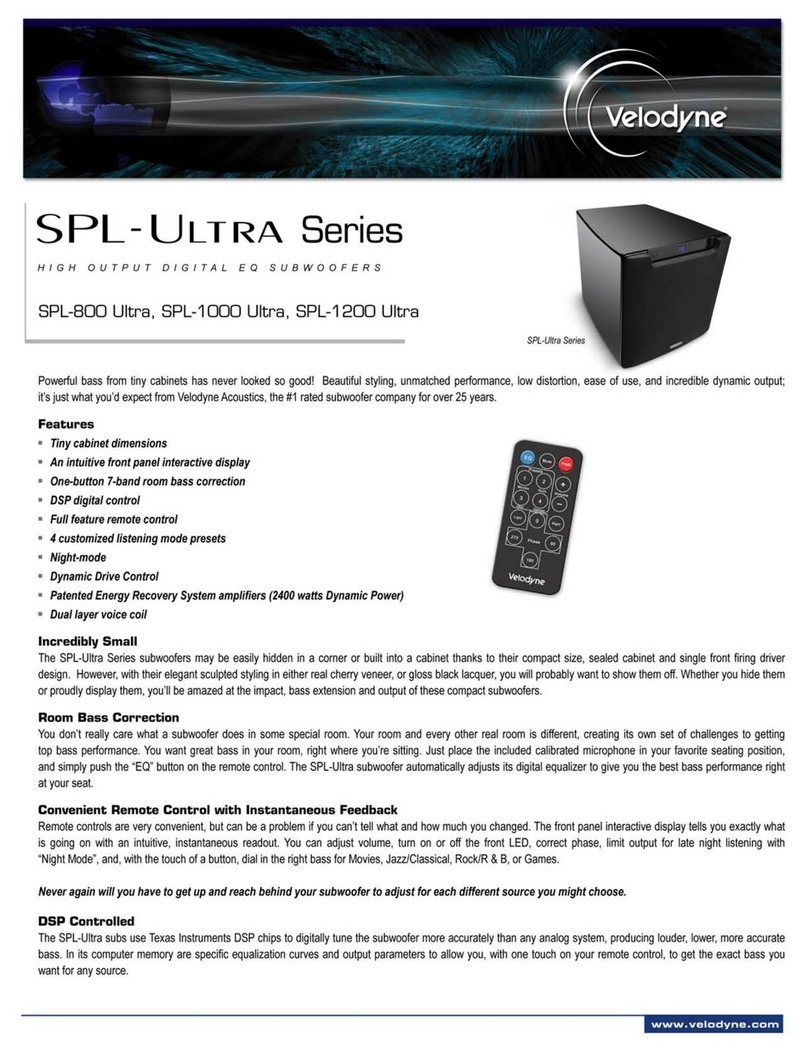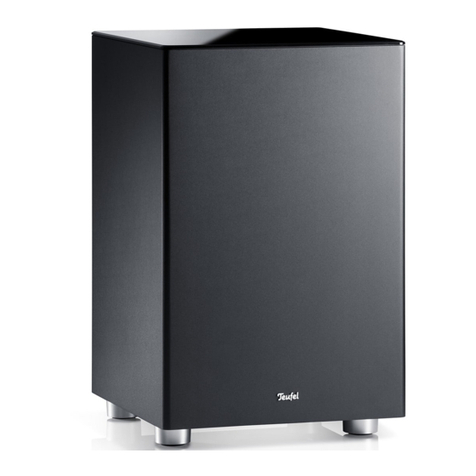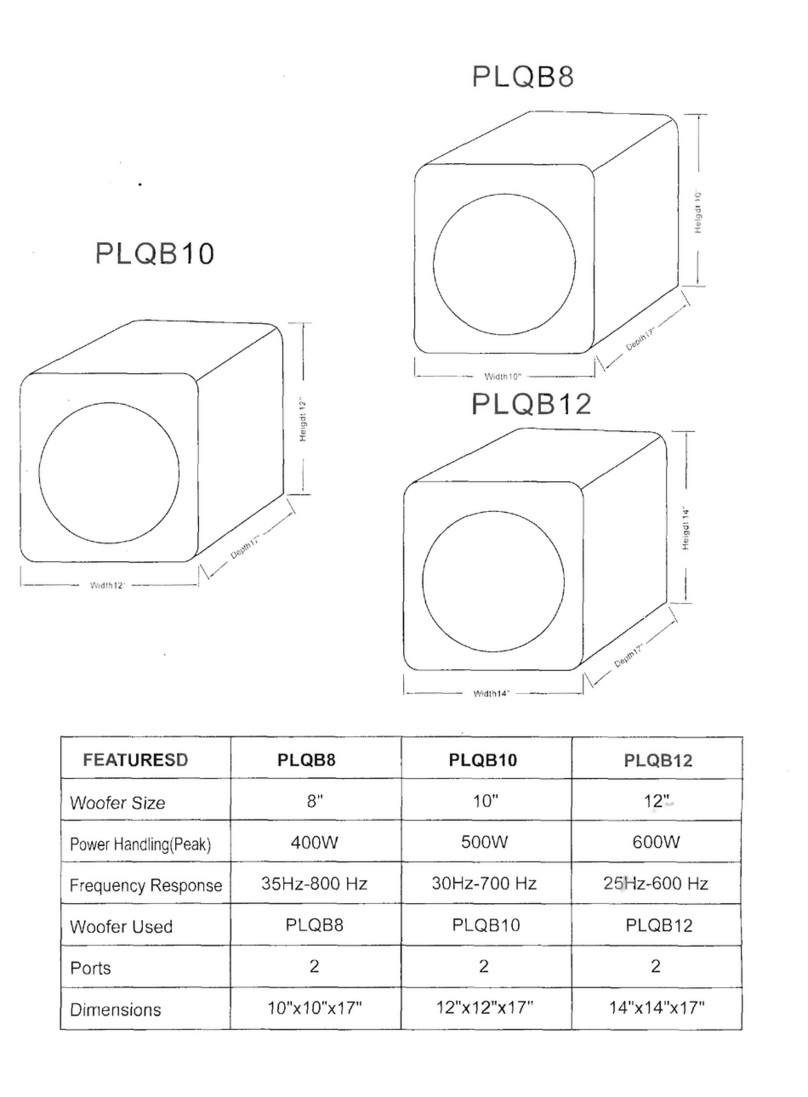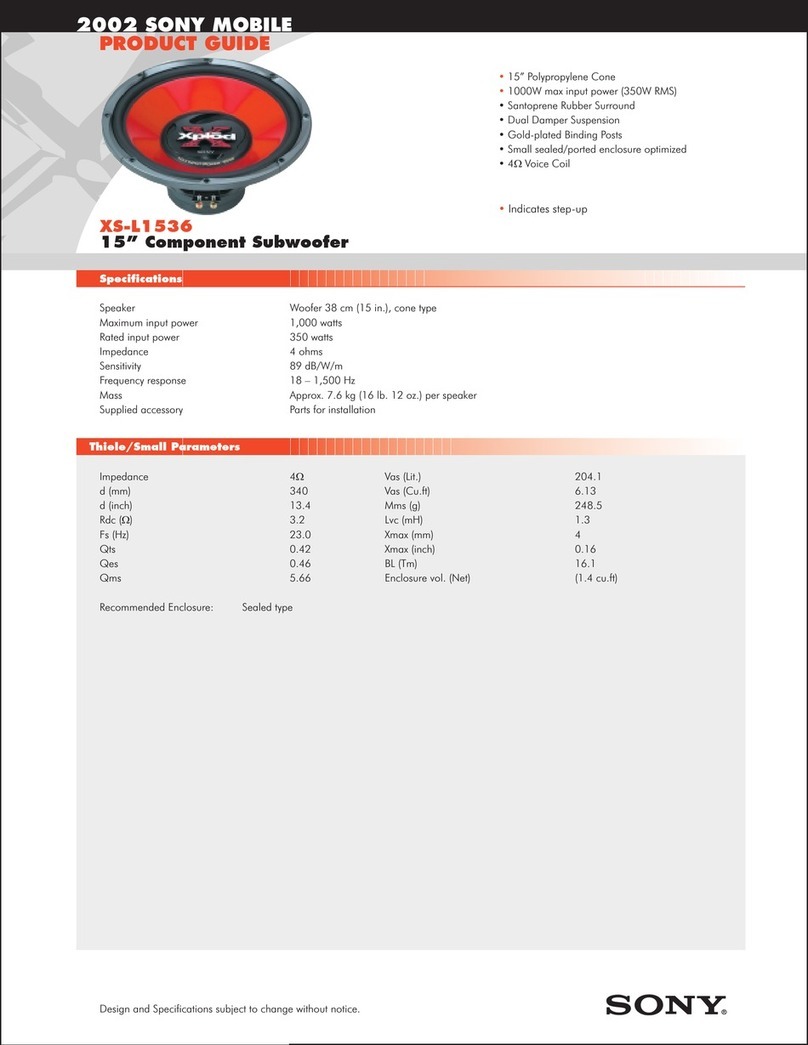
STS WISDOMAUDIO.COM
North American Warranty
Standard Warranty
When purchased from and installed by an authorized Wisdom Audio dealer, Wisdom
Audio loudspeakers are warranted to be free from defects in material and workmanship
under normal use for a period of 10 years from the original date of purchase on the
cabinet and passive drivers.
IMPORTANT: Wisdom Audio loudspeakers are designed for installation and operation in
environmentally controlled conditions, such as are found in normal residential
environments. When used in harsh conditions such as outdoors or in marine
applications, the warranty is three years from the original date of purchase.
During the warranty period, any Wisdom Audio products exhibiting defects in materials
and/or workmanship will be repaired or replaced, at our option, without charge for
either parts or labor, at our factory. The warranty will not apply to any Wisdom Audio
products that has been misused, abused, altered, or installed and calibrated by anyone
other than an authorized Wisdom Audio dealer.
Any Wisdom Audio product not performing satisfactorily may be returned to the factory
for evaluation. Return authorization must first be obtained by either calling or writing
the factory prior to shipping the component. The factory will pay for return shipping
charges only if the component is found to be defective as mentioned above. There are
other stipulations that may apply to shipping charges.
There is no other express warranty on Wisdom Audio products. Neither this warranty
nor any other warranty, express or implied, including any implied warranties of
merchantability or fitness, shall extend beyond the warranty period. No responsibility is
assumed for any incidental or consequential damages. Some states do not allow
limitations on how long an implied warranty lasts and other states do not allow the
exclusion or limitation of incidental or consequential damages, so the above limitation
or exclusion may not apply to you.
This warranty gives you specific legal rights, and you may also have other rights, which
vary from state to state. This warranty is applicable in the United States and Canada
only. Outside of the U.S. and Canada, please contact your local, authorized Wisdom
Audio distributor for warranty and service information.
